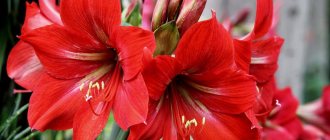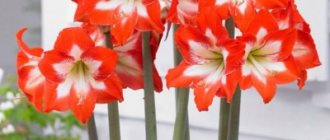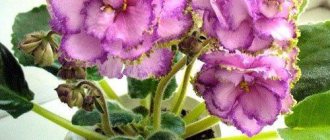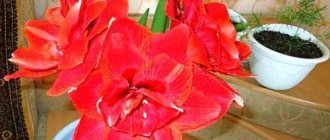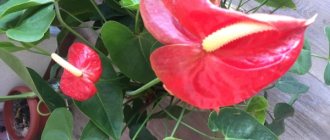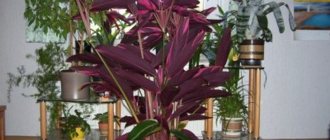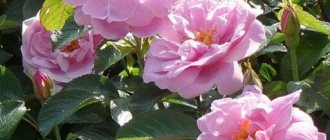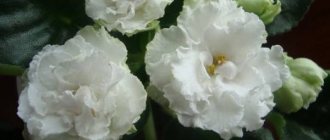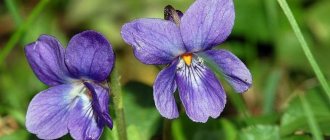There are 5 main types of hippeastrum (amaryllis), including large-flowered, double-flowered, small-flowered, trumpet-shaped and arachnid. We have included the most interesting hippeastrums in the selection, enjoy and don’t forget to see how much free space you have on your windowsills!
- Basic classification of hippeastrum varieties
- New items: hippeastrum - spiders
- Hippeastrum spiders: cybister varieties
- Pink hippeastrums: 3 delicate varieties
- Red and crimson hippeastrums: 5 varieties
- White double hippeastrums
- Bicolor hippeastrums
- Which hippeastrums are of interest to experienced collectors?
Basic classification of hippeastrum varieties
We consider it our duty to warn you, dear readers, that planting material from the Netherlands is presented on our market. And “honest” sellers will provide even the last rootless mongrel with a picture and name it somehow, believe me - these should also be sold. Therefore, in stores you will find an incredible number of options and series: Galaxy, Mystic, Butterflies, etc., especially before the New Year and Christmas.
Hippeastrums, even in our conditions, produce a lot of seeds and are beautifully cross-pollinated, producing tons of hybrid offspring, and all of them are put on sale annually under different names, so even the universe will not 100% choose an honest and pure variety for you based on the picture on the package.
The International Registration Authority (ICRA) for new varieties is the Royal General Bulb Growers' Association, located in the Netherlands. The association's website contains a database of registered hippeastrum varieties. Please note that according to flower size, according to the Dutch classification, hybrid hippeastrums were divided into large-flowered, medium-flowered, and small-flowered. At the same time, the South African classification used musical terminology: symphony, sonata, sonatini and solo. Also, recently, both hippeastrums and amaryllis are supplied under a double name. And here you can find out more about it: Hippeastrum and amaryllis: 6 main differences between them
To date, the following trade classification of hippeastrum has been accepted:
- 1: Galaxy Group (large-flowered) 16 cm and more
- 2: Diamond Group (medium flowered) 12-16 cm
- 3: Colibri Group (small-flowered) less than 12 cm
- 4: Double Galaxy Group (double, large-flowered) 16 cm and above
- 5: Double Diamond Group (double, medium-flowered) 12-16 cm
- 6: Double Colibri Group (double, small-flowered) less than 12 cm
- 7: Spider Group (Cybister Amaryllis)
- 8: Butterfly Group (with orchid-like flowers)
- 9: Trumpet Group (tubular hybrids).
New: Hippeastrum (amaryllis) Elvas, Double Diamond Group
Features of agricultural technology
The varietal color of hippeastrum does not affect the characteristics of agricultural technology . Although hippeastrum is considered an unpretentious crop, there are certain nuances of agricultural technology for hybrid hippeastrums that it is advisable to know.
- Orange hippeastrums are light-loving (place pots of plants on a south, south-east or south-west window).
- Many varieties have a tall peduncle, which can break under the weight (use support).
- Plant in humus-rich soil.
- Be sure to arrange a dormant period, lowering the temperature to 12° C for 6-8 weeks (during this time the plant is not watered at all).
- During flowering, the crop needs abundant, frequent watering.
IMPORTANT! When planting, the bulb is buried to 1/2 or 1/3 of its height. Too much deepening can cause rotting of the bottom due to excessive watering.
Blooming hippeastrum will not leave indifferent even those who do not grow plants. Orange hybrids and varieties delight gardeners with their rich, long-lasting color and large size. Many orange cultivars are time-tested and are not demanding on growing conditions.
New items: hippeastrum - spiders
The arachnid hippeastrum (Cybister Amaryllis) is gaining momentum and impressing with its exotic, daylily-like spider flowers. Their long, sometimes curled petals are incredibly striking in bright colors: deep red, soft green, copper, dark pink, creamy white and burgundy.
According to the classification of hippeastrums, spiders belong to the orchid group: Orchid flowering types. Most of the hybrids in this category were developed by crossing species of hippeastrum, such as Hippeastrum papilio, Hippeastrum calyptratum, Hippeastrum cybister. Based on the name of the latter, they are called cybisters.
Hippeastrum cybister
Hippeastrum spiders are unlike any other group; in warm climates, cybister varieties can be grown continuously without putting the plants into a dormant stage. Each bulb usually produces 2 peduncles and 4-6 flowers. However, large (more than 20 cm) bulbs can produce up to 3-4 peduncles and 5-8 flowers, but this is influenced by the size of the bulb and the variety. The larger the bulb, the more likely it is to produce more multi-flowered stems.
Depending on the temperature, hippeastrum spiders bloom 8-10 weeks after planting. The buds do not bloom at the same time, so the total flowering period lasts quite a long time.
Diseases and pests
Dangerous pests often attack the plant. The following are common among them:
The onion mite feeds mainly on the underground part of the plant, turning it into dust. This pest loves moisture, and therefore excessive watering will only benefit it. To get rid of onion mites, treat amaryllis with organophosphate insecticides. Thrips. When these small insects appear brown in color, the leaves turn yellow and wither. Insecticides such as Ankara, Fitoverm and Iskra will help restore the health of the flower. Aphids - attack leaves. It causes them to turn yellow and curl up. To get rid of aphids, you need a solution of potassium soap, which should be used to wipe the damaged leaves. False scale insect is another dangerous pest, when it appears the leaves turn brown. A solution of laundry soap will help solve the problem. Amaryllis worm - affects bulbs and other parts of the plant, causing the leaves to die. This parasite is typical only for amaryllis and is sometimes quite difficult to remove.
Having discovered insects, it is important to immediately remove the damaged parts of the flower and treat with insecticides. This treatment can last for a whole month to completely remove the pest.
In addition, the plant is characterized by fungal diseases:
- Gray rot affecting leaves. With this disease, characteristic brown spots appear on the flower. The main reason for the formation of gray rot is a large amount of moisture in the soil. To help the plant, transplant it into a pot with fresh substrate.
- Anthracnose - is expressed in the formation of brown spots on the leaves, so the first step is to remove them and treat the flowers with a fungicide solution. It is also necessary to reduce the number of waterings.
- Fusarium (root rot). With this disease, amaryllis begins to wither. The reason for this behavior is the lack of fertilizers in the soil and a sharp temperature change. To save the flower, spray it with Fundazol.
- Stagonosporosis, expressed by the formation of red spots on all parts of the plant. The main reasons are too frequent watering and temperature changes. The disease is contagious, so place the flower in “quarantine” and treat it with Fundazol or Bordeaux mixture. Adjust watering and protect amaryllis from drafts.
Hippeastrum spiders: cybister varieties
Rosario. This variety has large bulbs with a diameter of 20-24 cm that produce 1-3 peduncles. It is generally slow growing and less vigorous than other varieties. Can be planted in a small pot (not much larger than an onion). The color, reminiscent of oriental lilies, is dominated by unusual shading.
Hippeastrum (amaryllis) Rosario
Chico. The RHS award-winning plant is a real beauty with chocolate green spider-like flowers measuring around 15cm in diameter, with incredibly long strands of stamens. Beautiful shape, exquisite shades attract attention. The plant is quite tall, about 40 cm.
Hippeastrum (amaryllis) Chico
Evergreen. The RHS award-winning variety is truly elegant and eye-catching with its spidery flowers, green tone and soft lemon-lime outer petals. The stamens are showy and very long.
Hippeastrum (amaryllis) Evergreen
Quito. The cherry upper petals contrast with the pale green and vanilla lower petals. Tall, about 23 cm peduncle, good for cutting.
Hippeastrum (amaryllis) Quito
Bogota. Bright and dramatic, it stands out with dark red star-shaped flowers with gracefully curved thin petals. The bright red and crimson shades are delightfully shaded, the flowers are large, more than 12 cm in diameter.
Hippeastrum (amaryllis) Bogota
La Paz. Graceful, bright orange-red with pale green lower petals. The flowers are about 12 cm in diameter and stand well as cut flowers.
Hippeastrum (amaryllis) La Paz
Rose. Shining, huge large pink flowers appear as if by magic from a tall, straight stem.
Hippeastrum (amaryllis) Rose
Lima. Everyone is fascinated by the burgundy-green flowers and delicate exotic shape of this variety. The lower petals are greenish, the stamens are magnificent and huge.
Hippeastrum (amaryllis) Lima
Sumatra. An unusual dark orange spider with elongated white stamens. The peduncle is strong, up to 20 cm, durable. Excellent cut.
Hippeastrum (amaryllis) Sumatra
Emerald. An elegant "emerald", with thin, elegantly curved petals and a green throat. The coloring is hatched: millions of crimson specks are grouped on a soft green background. The flowers are large, about 15 cm in diameter.
Hippeastrum (amaryllis) Emerald
Tango. The narrow petals curve back, adding to the attractiveness. The flower is cherry-red on the upper petals and green on the lower petals, size 8-15 cm, odorless. The petals are narrow, long, with a wavy edge.
Hippeastrum (amaryllis) Tango
Hippeastrums (amaryllis) with orchid-like flowers in the description contain the note: Butterfly Group. The best varieties: Exotic Star, Papillio, Striped Panther.
Hippeastrum (amaryllis) from the Butterfly group: Wild Amazone, Sweet Lilian, Exotic Star and Mystica.
History and description of the flower
Hippeastrum - a guest from South America
The genus Hippeastrum lives in different regions of South America with different conditions: sand dunes, elephant mountains, river mouths, and tropical forests. The flower was first brought to Europe in the 16th century. Flower growers love this majestic, proud flower and are happy to grow it at home. The plant has adapted well to dry apartment air and feels great on southern windowsills and balconies.
Hippeastrum is a bulbous plant with a hollow peduncle
Hippeastrum belongs to the Amaryllis family and is a bulbous plant. The shape of the bulb is round, sometimes flattened on the sides when daughter bulbs are observed; diameter from five to ten centimeters. The neck of the bulb is 3 cm in length, the base is round, sometimes oval, dark, formed from old bulb tissue, roots extend from the bottom in a bunch, reaching a length of 35 cm.
It can take a year and a half from the beginning of the formation of an inflorescence in the bulb to the beginning of flowering. During this time, by the number of leaves formed, you can know for sure the number of established inflorescences belonging to the umbrella type.
The peduncle of hippeastrum is a hollow, cylindrical stem without leaves, 30–80 cm long, has a smooth surface with a slight waxy coating. The top is crowned with an inflorescence of two - four, and sometimes 6 flowers of both sexes. From the moment they emerge from the bulb until flowering, the buds are thoroughly covered with bracts. The size and quality of such a blanket cannot be used to judge the size of the flowers hidden inside, but this is a characteristic difference between one variety and another. A large, beautiful funnel-shaped flower is located on a four-centimeter peduncle.
The fruit, formed from the ovary as a result of pollination, is a dry capsule, which diverges when ripe and black flat seeds spill out of it. Up to 350 dark seeds can be formed on one hippeastrum, and hippeastrums, which have white flowers, produce very few viable seeds - about 50–60 pieces. If you don’t hesitate, collect the seeds and sow immediately, germination will be almost one hundred percent.
Pink hippeastrums: 3 delicate varieties
Estella. The variety is known for its clear, rich pink hue, which is not so often found in hippeastrums. The flowers are tubular in shape and decorated with clear white stripes. The pedicels are relatively long, slightly drooping, the perianth tube is 11-15 cm long. The greenish throat literally glows, very impressive.
Hippeastrum (amaryllis) Estella
Paris. Tall variety, about 80 cm tall. It is distinguished by water stains along the edges of the petals in a lavender-pink hue. The petals are tightly adjacent to each other, the flower is flat, saucer-shaped.
Hippeastrum (amaryllis) Paris
Rebecca. Tubular, medium, pure pink new variety of hippeastrum (launched 2022). The stamens are long, the throat is greenish, very beautiful.
Hippeastrum (amaryllis) Rebecca
Features of caring for garden hippeastrums
In the warm season, the plant can be planted in open ground so that it can rest and gain strength. This crop tolerates sunlight well, but it is better to plant it in a place with openwork shade. In addition, the soil on the site must be well-permeable to moisture to avoid stagnation.
Although the plant does not require special care, it is important to ensure that no weeds grow nearby and remove them in a timely manner. The soil needs to be loosened regularly to prevent a dense crust from forming.
The distance between the bulbs should be at least 15 cm, and 5 cm between the children is enough. The bulbs must be buried in such a way that they protrude 1 cm above ground level. If the weather is moderate, you should water once a week. During hot days, increase watering by 2 times.
The process of caring for hippeastrum includes two main states - the flowering period and hibernation, which preserves the plant until the next flowering. Given the characteristics of the bulbous flower, it does not require significant effort.
Red and crimson hippeastrums: 5 varieties
Benfica. An exceptionally elegant variety, the flowers of which acquire a very dark, crimson-red color with velvety petals. Flowers develop a few weeks after the bulbs are planted, and the plants reach a height of 50 to 60 cm.
Hippeastrum (amaryllis) Benfica
Double Dragon. This stunning double red variety is easy to grow for both experts and beginners. It will definitely complement the holiday decor and warm you up in the cold with just its appearance.
Hippeastrum (amaryllis) Double Dragon
Double Dream. Resembling a water lily, this variety surprises with the shimmer of crimson-red, double, very large flowers (about 17 cm). The tips of the petals seemed to be dipped in white paint.
Hippeastrum (amaryllis) Double Dream
Barbados. The dark scarlet flowers towards the throat are marked with a broad stroke of white, creating a very dramatic effect when fully bloomed.
Hippeastrum (amaryllis) Barbados
Double Delicious. The variety has become one of the most popular double red varieties in the range of established bulb suppliers. The magnificent symmetry of the petals makes the plant very elegant.
Hippeastrum (amaryllis) Double Delicious
Diseases and pests
Red burn
Hippeastrum belongs to plants that are resistant to disease. Most often he suffers from a “red burn”. This name hides the malicious fungal disease stagonosporosis. Its symptoms can appear on both the leaves and the bulb. Oblong reddish spots appear on the leaves. Similarly, similar spots can be found on bulbs. The bulb becomes scratched, softens and the plant may die. One of the signs of the disease is a stop in growth, as well as in the addition of leaves.
When purchasing bulbs, you need to carefully examine them so that there are no reddish spots. The husk should be glossy and brownish in color. The head itself is solid, without bruises. If signs of disease appear at home, you need to remove the bulb and inspect it. If small stains are present, they are removed, and the wounds are treated with brilliant green or copper oxychloride. After drying for a week, the bulb is planted in fresh soil, previously treated with a fungicide. The bulb is planted in such a way that the bottom with roots is sprinkled with soil. If the onion is severely damaged and softened, it must be destroyed.
Fusarium
To prevent damage by Fusarium, the bulb is soaked for a couple of hours in potassium permanganate before planting. The disease manifests itself as yellowing of the leaves and wilting of the plant. The bulb is treated with brilliant green, and the soil is watered with a weak solution of potassium permanganate.
Parasites
Among the parasites, hippeastrum can be affected by spider mites, thrips, and narcissus flies. The occurrence of thrips is indicated by snow-white spots and stripes on the outside of the leaves. The insects themselves can be found on the underside of the leaves. It is required to apply two or three times with Actellik, Fitoverm or a similar preparation with an interval of five days.
The daffodil fly lays its eggs in the neck of the flower. The larvae penetrate the bulb and damage it. The plant stops forming and blooming. It is necessary to check the bulb and treat it with Aktara. In case of extensive damage, the diseased plant must be destroyed.
White double hippeastrums
Marilyn. Exotic double flowers are creamy white with a light green tint. This lush hippeastrum stands out even among its tropical counterparts.
Hippeastrum (amaryllis) Marilyn
Alfresco. A relatively new variety. Snow-white with a greenish throat, terry, medium size (about 15 cm) - breathtaking.
Hippeastrum (amaryllis) Alfresco
Arctic Nymph. Very harmonious, large snow-white, semi- or fully double flowers with green reflections and unobtrusive reddish strokes near the greenish throat.
Hippeastrum (amaryllis) Arctic Nymph
Check out other interesting terry varieties: Double Record, Ice Queen, Blossom Peacock, Celica, Dancing Queen, Diva, Double Dragon, Elvas, Exotic Peacock, Flaming Peacock, Lady Jane, Malaga, Red Peacock, Cherry Nymph.
Hippeastrum (amaryllis) Nymph series: The flowers are very aesthetic, often bicolor.
Bicolor hippeastrums
Hippeastrum leopoldii has become the base plant for many hybrid forms with red and white flowers. The plants reach a height of about 80 cm. The flowers are mostly flat and appear in late autumn.
Amsterdam. A two-color variety with an absolutely even, saucer-shaped flower. A warm, coral-pink hue predominates, but the white “star” (the so-called pattern formed by white stripes on the main background) adds zest to it.
Hippeastrum (amaryllis) Amsterdam
Faro. A soft and delicate variety with large, flat, salmon-pink flowers up to 22 cm in diameter. Distinguished by white veins; petals have a beautiful, rounded shape. A very reliable variety.
Hippeastrum (amaryllis) Faro
Ambience. White with scarlet shading and the tip of the petals, tubular, large-flowered. A hybrid of Hippeastrum Leopold was obtained in the Netherlands in 1995. The peduncle is not very high, about 50 cm, the 15 cm bulb consistently produces 2 peduncles.
Hippeastrum (amaryllis) Ambiance
Prelude. Very bright, festive, short, handsome, sterile - does not lay seeds.
Hippeastrum (amaryllis) Prelude
Dancing Queen. Peony, double, bicolor, large-flowered. But even this was not enough for the breeders - the petals also have a frill! The flowers are large, about 22 cm in diameter, decorated with red and white stripes.
Hippeastrum (amaryllis) Dancing Queen
Santiago. A very colorful sight. Cheerful cherry and white stripes seem to compete in splendor on the miniature, gracefully shaped flowers. This is one of the brightest bicolor tubular hippeastrums.
Hippeastrum (amaryllis) Santiago
Flamenco Queen. A large-flowered bicolor variety with very expressive colors. The peduncle is tall (about 70 cm), durable.
Hippeastrum (amaryllis) Flamenco Queen
Magic Green. Medium flowered, simple. The variety was awarded the medal of the Royal British Horticultural Society (RHS). The flowers are glamorous in color - ivory to pale green, with subtle crimson markings, and are medium in size (about 15 cm).
Hippeastrum (amaryllis) Magic Green
Clown. Large-flowered (about 20 cm), simple, two-colored - massive and very effective, the stripes are contrasting and wide. Winner of a prestigious RHS award.
Hippeastrum (amaryllis) Clown
general information
Hippeastrum flowers resemble large and bright stars, which is why the flower got its name. In its natural environment, it grows in the tropics and subtropics, mainly in the Amazon basin. Hippeastrum is very similar to its closest relative, amaryllis, only it is predominantly found in South Africa.
Because of this similarity, hippeastrum was often confused with other plants from the amaryllis family. Therefore, it was difficult to establish exactly how many of its species exist in nature. Today it is more transparent - there are about 90 varieties of hippeastrum.
Photo: proprikol.ru
In Western Europe, Kerr's firm in Liverpool was especially famous. Although they mistakenly presented their flowers as amaryllis, their work and participation in international exhibitions gave a tremendous impetus to gardeners and breeders. Later, when several more species were brought from Peru and Brazil, the real era of crossing began.
Hippeastrum is a flowering perennial with a round bulb and a short, wide stem. Long elastic leaves grow oppositely and stretch up to 70 cm. On the same long stem it grows to six large bright flowers resembling a funnel. The most common petal color is red in all its diversity.
Photo: olx.kz

